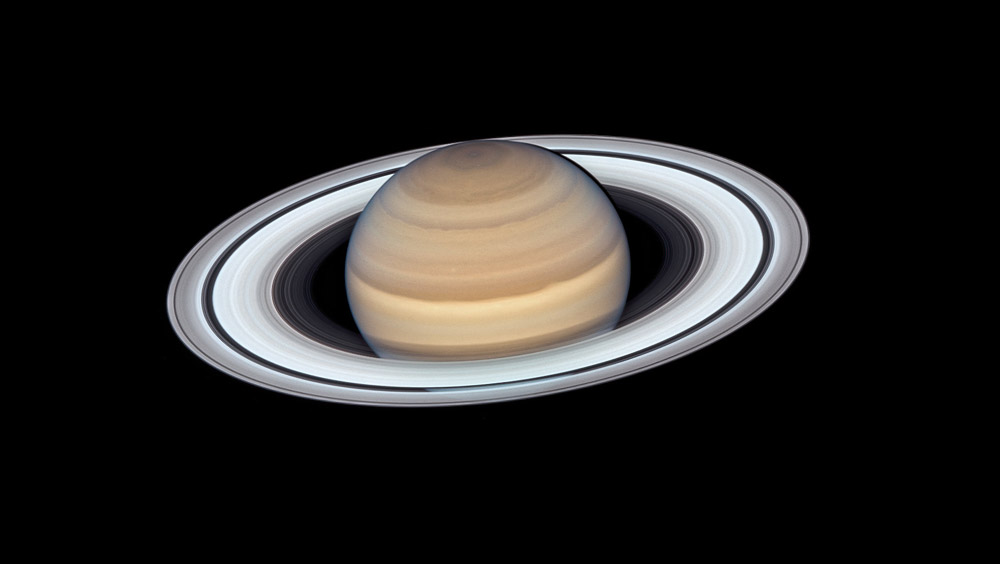King of Moons and Rings: Astronomers have discovered another 62 moons around Saturn. With 145 moons, the ringed planet is once again the planet with the most moons in the solar system – surpassing its larger neighbor Jupiter. Saturn is now the only planet with more than 100 officially known satellites. All of Saturn’s newly discovered moons are rather small and belong to three groups of Saturn’s irregular moons. So their discovery required a search that lasted several years.
Jupiter and Saturn are the largest and largest lunar planets in the solar system. But in the competition for the most satellites, they’re in a neck-and-neck race with an ever-changing winner: In 2018, Jupiter gained twelve moons, overtaking longtime favorite Saturn. But early in 2019, astronomers discovered 20 more moons around Saturn, making it the planet with the most moons. At the beginning of 2023, twelve moons were again discovered around Jupiter, and since then it has been ahead of the total of 92 known moons.
Lunar search in the orbit of Saturn
Now there’s another twist in the leading duo of moon-rich giants: Astronomers led by Edward Ashton of the University of British Columbia have discovered 62 new moons around the ringed planet Saturn. For their research, which began in 2019, they first examined Saturn’s circumference for a year using the Canada-France-Hawaii Telescope (CFHT) in Hawaii. They evaluated the recordings using the computer-assisted stacking method.
Many of the images were taken over a period of three hours digitally in order to increase the contrast and thus enable even the faintest small moons to be detected. This made it possible to detect lunar candidates with a minimum size of 2.5 km. The team has already discovered several dozen previously undiscovered objects.
62 new satellites confirmed
But this alone was not enough to identify these newly discovered objects as true satellites of Saturn. Because such pieces near a planet could also be asteroids that happen to fly by. Therefore, astronomers had to monitor the orbital motions of their new discoveries for another two years. “Tracking these moons reminded me of some junctions in children’s coloring books,” says Aston. “We needed to incorporate the locations of these recorded satellites into our data into a reasonable orbit.”
And then finally it was time: 62 of the newly discovered celestial bodies turned out to be true satellites of Saturn. The ringed planet now officially has 145 satellites – making it by far the planet with the most moons in the solar system. Saturn is also the first and so far the only planet with more than 100 moons. Jupiter, the “king of the planets,” is now much smaller than that with 95 moons.
Three groups of irregular moons of Saturn
All of Saturn’s newly discovered moons belong to irregular satellites of the ringed planet. Unlike the regular 24 moons, they do not orbit in coplanar circular orbits. Instead, they follow broad elliptical orbits that are mostly inclined to the plane of the planet. Based on their position and motion, astronomers distinguish three groups of irregular moons of Saturn – the Inuit group, the Gallic group, and the North group. So all the satellites in these groups are named after the myths of these cultures.
The 62 new moons of Saturn are divided into these three irregular groups. Most of them belong to the previously particularly numerous northern moons, and three of them are in the Inuit group, Ashton and his team report. Astronomers believe that all of Saturn’s irregular moons formed from the collision of one or more of its earlier, larger moons.
This would also explain why a relatively large number of them orbit their planet backwards – opposite to its direction of rotation. Accordingly, these retrograde satellites could only have arisen within the past 100 million years by the destruction of a medium-sized moon that was also orbiting retrograde. “The more we push the boundaries of modern telescopes, the more evidence we find,” Ashton says.
Source: University of British Columbia (UBC)

“Prone to fits of apathy. Zombie ninja. Entrepreneur. Organizer. Evil travel aficionado. Coffee practitioner. Beer lover.”






More Stories
NASA receives the message via a laser beam from a distance of 226 million kilometers
Upgrade using 20 GPUs and 20 CPUs in testing [Update 3]
Raspberry Pi5 as desktop replacement after 5 months